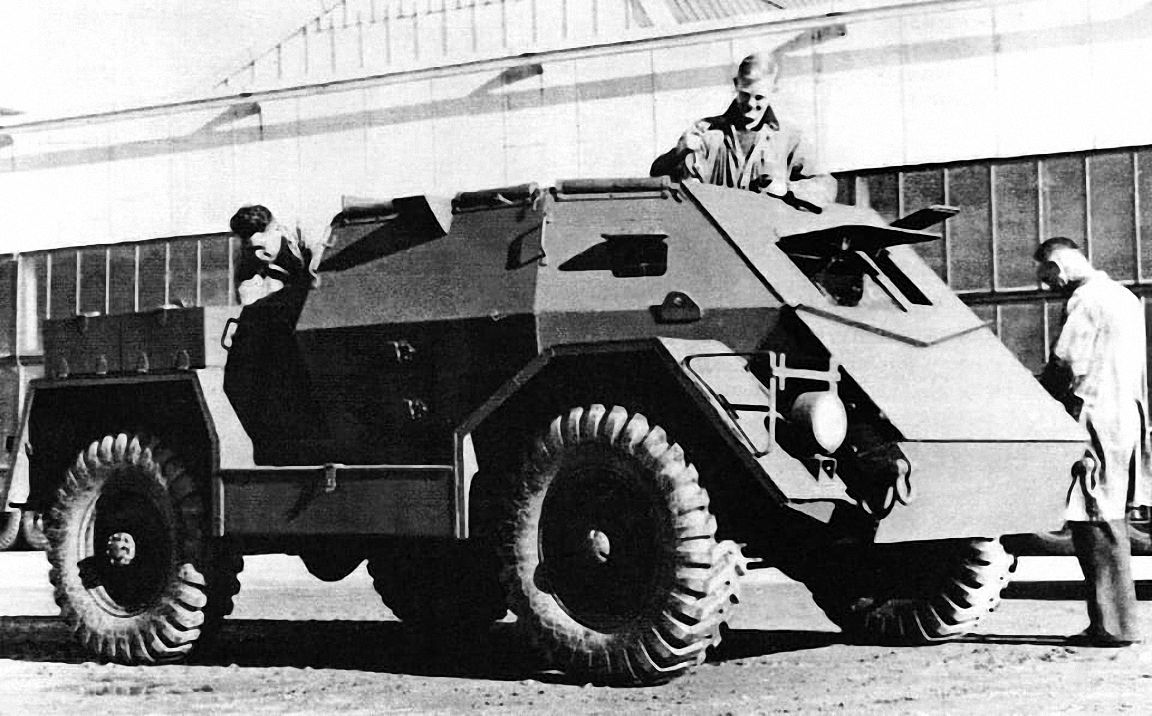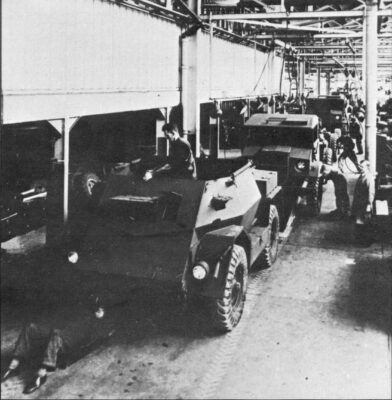As World War II broke out, the United Kingdom faced difficulties in meeting the Commonwealth's demand for armoured fighting vehicles. This situation prompted many Commonwealth countries to design their own vehicles. Lacking the advanced industrial capacity to produce heavily armoured vehicles like tanks, these countries mainly focused on developing armoured cars, often utilizing imported chassis.
India designed a series of armoured vehicles known as the Armoured Carrier, Wheeled, Indian Pattern (ACV-IP). These vehicles were built using Ford or GMC CMP truck chassis imported from Canada, with the Indian Railways primarily responsible for constructing the armoured hulls. The typical armament featured a Bren light machine gun, which was mounted in a small turret in some variants, a Boys anti-tank rifle, and a No. 19 radio set. Production of the ACV-IP took place from 1940 to 1944, resulting in a total of 4,655 vehicles.
The ACV-IP was deployed by Indian units in the Far East, Mediterranean, and Middle East theatres. The vehicles were typically assigned to divisional reconnaissance regiments, serving as reconnaissance vehicles, personnel carriers, anti-aircraft weapon carriers, or Forward Observation Officer vehicles.
New Zealand also created their own version of the armoured vehicle. After negotiations with India to acquire their Pattern Carrier failed, an order for 45 vehicles was placed with Ford Motor Co. (NZ) Ltd in March 1942, along with a corresponding number of chassis from Canada. In August 1942, the Army ordered an additional 54 vehicles, bringing the total to 99.
Construction of the armoured hulls was supposed to begin immediately at the NZ Railway Workshops in Petone, but it remains unclear if the order was executed. The chassis, which were still in Canada as late as November 1942, eventually arrived in early 1943, with production starting shortly after. Production ceased by February 1944, by which time 76 vehicles had been completed, 9 were in the process of being fitted with bodies, and 15 chassis remained untouched.
Information about the carriers' service history during World War II is limited. Only seven vehicles were sent to the Pacific with the 3rd NZ Division, and it is uncertain whether they participated in any of the three operations to secure the islands in the Solomon's archipelago.
- This article has 355 words
- Reading time: 1 minute
- There are no photos
Become a Member - Access the Full Article
Members gain access to the full content of our articles, including photo galleries.


